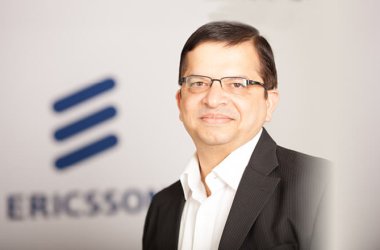 Machine-to-machine (M2M) communications could open up a new world of technological opportunity, both for consumers and for businesses. So why, despite the big buzz, hasn’t M2M taken off, and what interest should the Middle East take? Tom Paye investigates.
Machine-to-machine (M2M) communications could open up a new world of technological opportunity, both for consumers and for businesses. So why, despite the big buzz, hasn’t M2M taken off, and what interest should the Middle East take? Tom Paye investigates.
While it was once the stuff of science fiction, machine-to-machine (M2M) communication is here and ready to be used. The concept, which sees machines communicate with each other without any human interaction at all, is being hailed by some as a turning point in technological history, allowing users, companies and entire industries to do things that were never thought possible.
“Think about everything we can do – it can be something as simple as keeping checks on your children brushing their teeth. On the toothbrush, there’s a sensor, which tells you if they’ve brushed their teeth, and even how long they’ve brushed their teeth for. That information can then be sent directly to your smartphone,” says Rabih Dabboussi, Managing Director, Cisco UAE.
According to Dabboussi, this is all part of what Cisco calls the Internet of Things – billions of devices all connected together through the Internet, talking to one another and taking action without the need for human intervention. He talks of smarter homes and smarter cars, where sensors determine what’s happening in the environment and then send messages to other machines that take action to ensure a pre-set standard is preserved.
However, this is still the stuff of science fiction, as Dabboussi admits. After all, the sensors required to realise much of these concepts are prohibitively expensive. What’s more, they’ll need to be connected to the Internet via, presumably, Wi-Fi or a 4G chip, which means batteries will have to be involved. And as battery technology still hasn’t caught up with the futuristic world some have envisioned, these smarter homes and cars are still a way off.
But M2M technologies are indeed being deployed today. In the Middle East, Dabboussi says that examples can mostly be found in the oil and gas industries. However, according to Pan En, Vice President, Huawei Middle East, M2M has made inroads into other business segments, too.
“We have seen certain industries become early adopters—such as the transportation, logistics, utilities and retail sectors—but that is not to say that they have more to gain than enterprises in other sectors. Many of the M2M applications that have risen to the forefront today focus on enterprises improving their service efficiency, reducing OPEX of their business, reducing energy consumption, and responding faster to scenarios, which tie directly to the customer service,” he says.
“Power companies are now reading meters through tele-metering systems instead of sending personnel to visiting houses; doctors just started remotely monitoring the conditions of their patients 24/7 by use of consumer devices connecting patients at home instead of requiring the patients to stay at hospital; vehicle-mounted terminals automatically display the nearest parking space; sensors in smart homes turn off utilities, close windows, and monitor security. This clearly is not a technology in its infancy, although M2M’s application and prevalence will certainly widen throughout the coming decades.”
So what’s driving this enthusiasm for M2M technologies? Well, according to Fadi Abdulkhalek, Vice President of Technology and Gulf Cluster Leader, Oracle, it’s all about delivering new services, thereby standing out in the market. Having gotten a taste of what’s possible with M2M, C-level executives are experimenting with the technology to see how they gain an edge over the competition.
“In 2012, Oracle sponsored a survey by Beecham Research on M2M adoption, in which more than 70 percent of C-level respondents said current M2M implementations are driven by the need to deliver new services, compared with 45 percent who said M2M was being used to improve operational efficiencies and reducing costs. The purpose of M2M solutions within the enterprise has always been about creating new differentiation in the market for the company’s products and services,” he says.
This is at odds with a widely perceived view that M2M is all about driving operational efficiencies and ultimately cutting costs. Indeed, if companies want to use M2M to offer new services, Dabboussi’s pie-in-the-sky future might not be so far off. What’s more, as more and more organisations prove how useful M2M has been, more will follow suit. Girish Bhat, Vice President, Middle East and Africa, Tech Mahindra, believes that the M2M market is set to grow tremendously over the next 10 years.
“By 2022 there will be 18 billion M2M connections globally, up from approximately 2 billion today. Today M2M accounts for only around 2 percent of cellular connections. By 2022, it will account for 22 percent,” he says.
Bhat adds that the technology will be spread around a number of different verticals – in other words, everyone will be in on the action.
“The biggest sector in 2022 will be intelligent buildings with 37 percent of all connections, dominated by heating, ventilation and air-conditioning (HVAC) and security systems. Accounting for 32 percent of connections, the second biggest is consumer electronics, including games consoles, music players, cameras and white goods. These are followed by utilities (10 percent) and automotive (8 percent). Short-range technologies will dominate M2M, accounting for 73 percent of connections in 2022,” he says.
There are, however, still obstacles to these predictions being realised. For one thing, the widespread adoption of M2M depends on telcos being able to accommodate the increased wireless traffic over their networks. After all, if these technologies are going to rely on 3G and 4G, operators need to be able to supply the bandwidth, according to Jean-Luc Scherer, Head of Service Line Revenue Growth, Communications Service Practice, Ericsson.
“For some industries, we have worked directly with service providers and delivered M2M solutions to them without much involvement of the operator. In sectors where efficiency, reliability and security is key, the role of the operator is becoming increasingly important. Ability to scale, provision and re-provision or re-deploy devices smoothly is going to be important as well,” he says.
“It is also important that telcos understand their major role in shaping the networked society, where anything that can benefit from a connection will be connected. Securely and efficiently connecting, provisioning and managing the growing amount of connections is key to achieve the process improvements, sustainability gains and lifestyle improvements of the vision of the networked society.”
Anurag Verma, Telecom Operations and Managed Services Lead, Smartworld, agrees with this. However, he also says that operators should take an increasing interest in M2M, as it could be one of their biggest revenue drivers in the future.
“From an industry perspective, we view telco as the key, and M2M as a vital service offering for the telco industry’s future revenue generation. The underlying infrastructure is owned and operated by telco groups, who are rapidly adding a service layer to offer it as a service,” he says.
Assuming the region’s operators do end up supporting the M2M market — as the experts believe they will — the opportunities could be huge. According to Abdulkhalek, an entirely new value chain could come into existence, spanning “multiple stakeholders, such as semiconductor manufacturers, sensing devices and gateway manufacturers, network equipment providers, telecommunications operators, independent software vendors, system integrators, and many more.”
Those who tout the words of people like Dabboussi as science fiction, then, might want to rethink their positions, as this market is about to get big.





